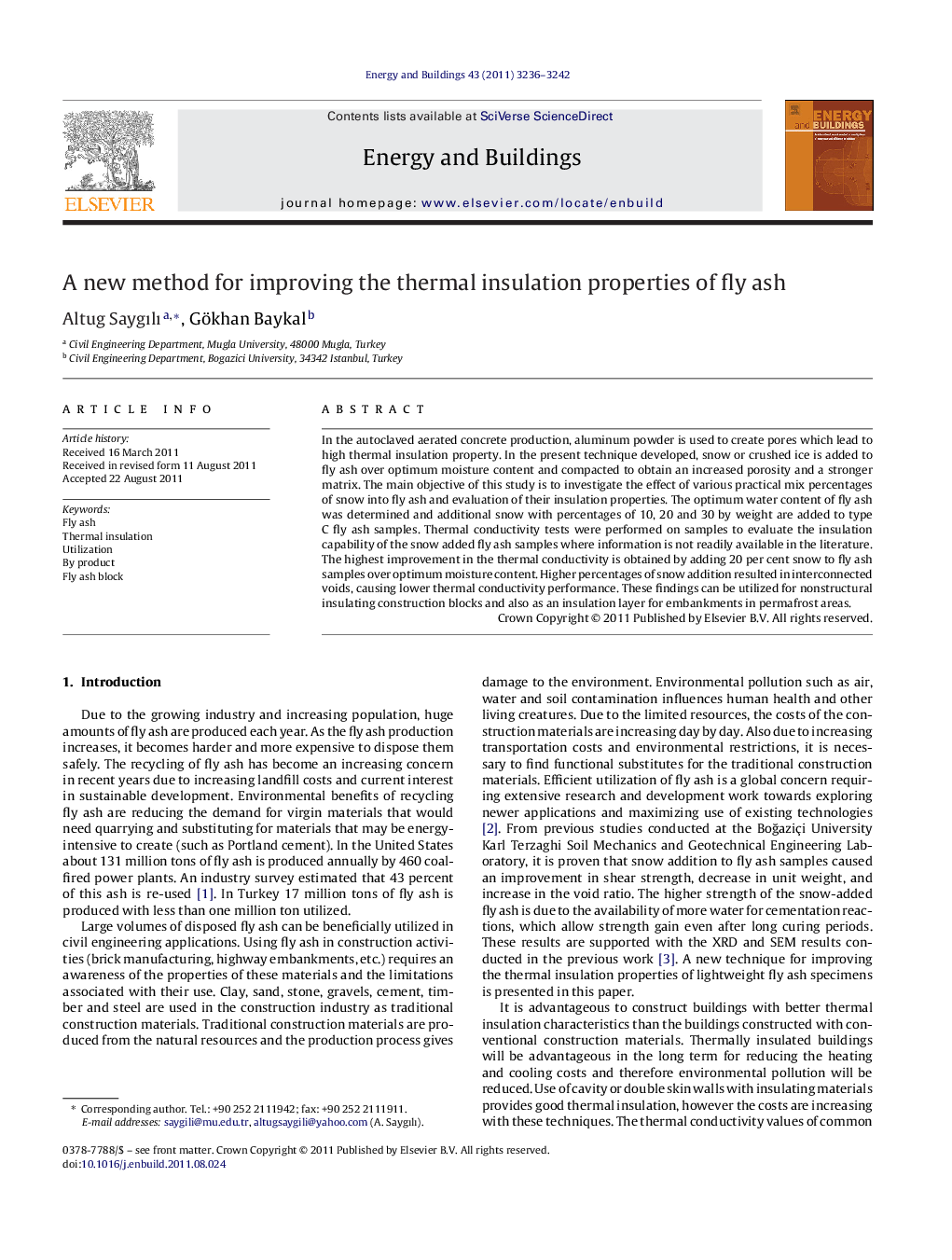| Article ID | Journal | Published Year | Pages | File Type |
|---|---|---|---|---|
| 264144 | Energy and Buildings | 2011 | 7 Pages |
In the autoclaved aerated concrete production, aluminum powder is used to create pores which lead to high thermal insulation property. In the present technique developed, snow or crushed ice is added to fly ash over optimum moisture content and compacted to obtain an increased porosity and a stronger matrix. The main objective of this study is to investigate the effect of various practical mix percentages of snow into fly ash and evaluation of their insulation properties. The optimum water content of fly ash was determined and additional snow with percentages of 10, 20 and 30 by weight are added to type C fly ash samples. Thermal conductivity tests were performed on samples to evaluate the insulation capability of the snow added fly ash samples where information is not readily available in the literature. The highest improvement in the thermal conductivity is obtained by adding 20 per cent snow to fly ash samples over optimum moisture content. Higher percentages of snow addition resulted in interconnected voids, causing lower thermal conductivity performance. These findings can be utilized for nonstructural insulating construction blocks and also as an insulation layer for embankments in permafrost areas.
► The study demonstrates that snow or crushed ice may be successfully used to introduce additional air voids into compacted fly ash analogous to aluminum powder addition in AAC production. ► Addition of snow caused a decrease in thermal conductivity coefficient. ► Developed technique can be used in cold climates where snow is readily available. In the absence of snow, crushed ice may be used at a cost. ► Developed technique has a potential to be used as an insulation material in permafrost areas especially for highways and pipelines.
